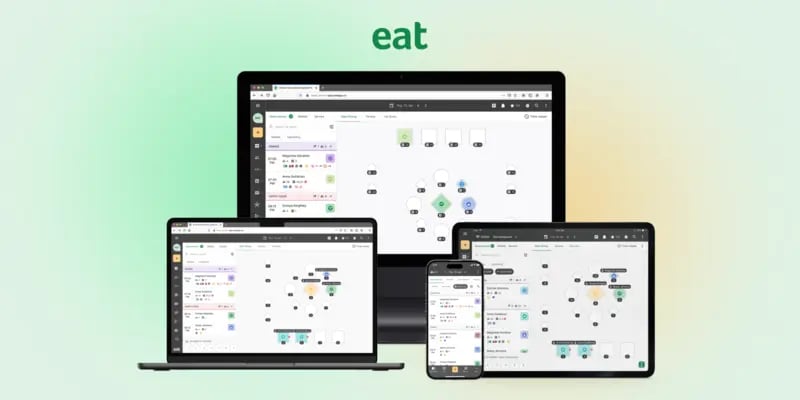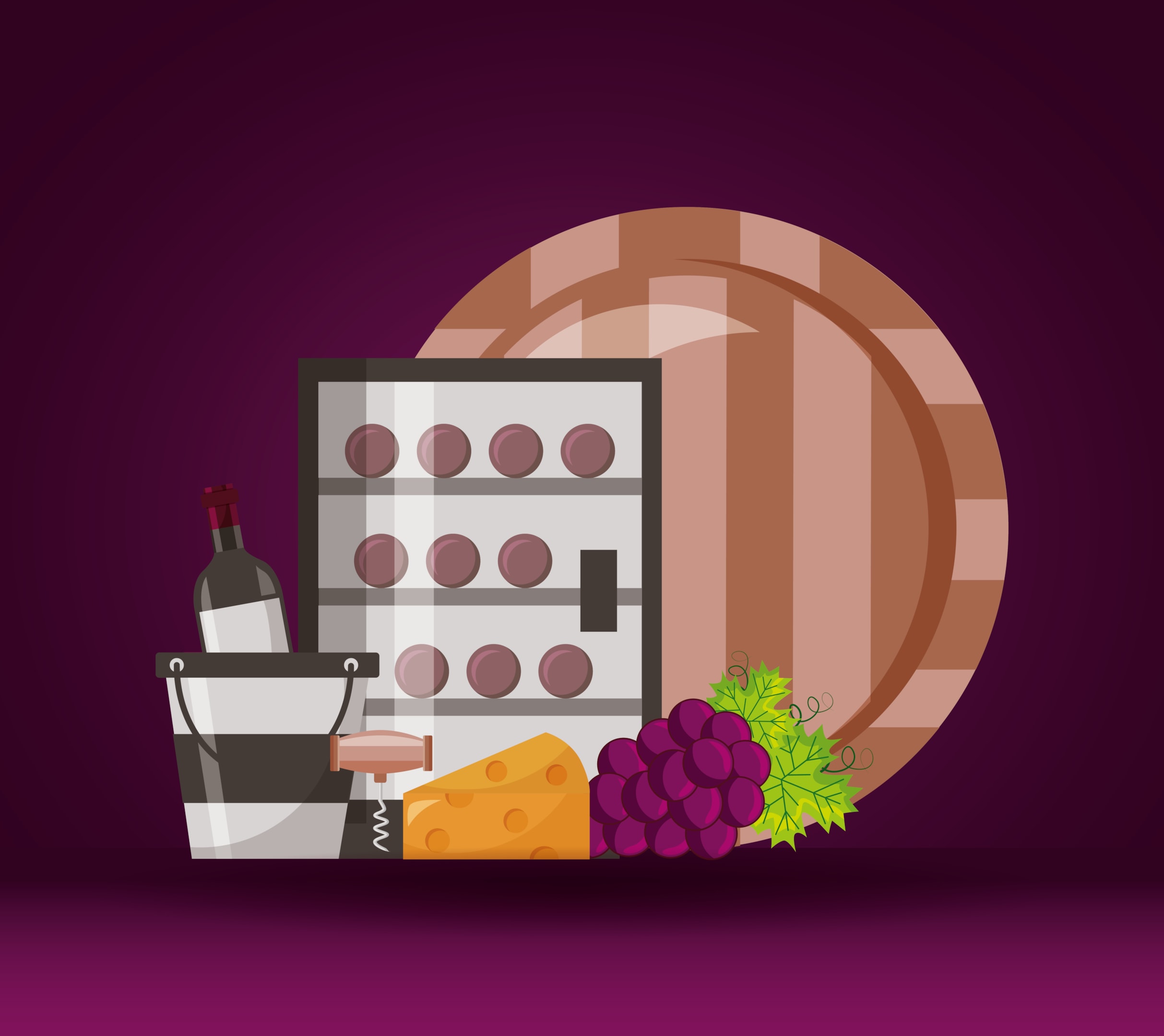Remember waiting endlessly for your check while your server juggles three other tables? That awkward dance of trying to catch their eye, waiting, handing over your card, waiting again—it's nobody's idea of a great dining experience.
Pay at table restaurant technology changes all that. Here's what's happening: restaurant guests are paying their bills in under 10 seconds, servers are handling more tables without breaking a sweat, and tips are going up by an average of 10%. This isn't futuristic fantasy. It's happening right now. Let's take a closer look
What is pay at table technology?
Pay at table restaurant systems let your guests settle their bills right where they're sitting. The entire process happens at the table, either through a QR guests scan with their phone or a wireless terminal your server brings directly to them.
Traditional payment experience is like playing telephone with six people. Pay at table technology cuts that down to two.
We're all used to tapping our phones to pay for coffee, scanning QR to order takeout, and using ApplePay at the grocery store. Restaurants were behind the curve on this one, but they're catching up fast with contactless payment innovations.
How the guest experience changes

Your guests finish their meal. Historically, this is where the dining experience drags. The server eventually brings a check, returns to collect payment, disappears to run the card, then comes back with a receipt. Each step eats up time.
With pay at table systems: your server drops the check with a QR code or brings a wireless terminal. The customer pays in seconds using their preferred payment method—whether that's a credit card, ApplePay, or Google Pay. They leave when they're ready. Done.
Kristian Klein of Mr. Miyagi restaurant in Melbourne puts it simply: "At any time that a guest wants to pay a bill, we can do that immediately. There's no wasted time where someone has to go collect a payment terminal, bring it back to a table, find the table number; it just happens straight away."
According to research, 61% of diners say that server handheld tablets improve their guest experience. And 32% believe restaurants are actually behind when it comes to this table technology.
Types of pay at the table systems
QR code payment solutions

You either print a QR code at the bottom of each check or place QR codes on your tables. Guests scan it with their phone camera (no separate app needed), see their bill, and pay in a few taps.
QR code payment systems work particularly well for casual dining, bars, and high-volume restaurants. Your server drops the check and keeps moving.
Handheld mobile POS devices- separate app
These are wireless terminals your servers carry to tables. The server brings the check along with the device, customers can pay with chip cards or tap their phone for contactless payment using Apple Pay or GooglePay, and the receipt prints right there at the table.
This approach works better for upscale restaurants where you want that personal touch. The wireless terminal can also suggest tip amounts, which tends to increase gratuity.
Tablet-based systems
Some restaurants use full tablets as tableside POS systems. These can handle both ordering and payment, giving servers a complete mobile workstation. Guests can even place orders from the tablet in some setups through restaurant automation.
Why restaurant owners are making the switch
Faster service table turnover
How much time does the traditional payment process waste? On average, about nine minutes per table. Cut that down to under a minute, and suddenly you're serving more customers during peak hours. Restaurants report table turns improvements of 15-30%.
Bryan Solar, Chief Product Officer at SpotOn, explains: "Our job is to help restaurants find efficiencies so that a manager can do a two-hour closeout report in five to ten minutes with the right systems in place."
Higher tips

When pay at table devices show pre-calculated tip suggestions (15%, 18%, 20%), customers tend to choose those options rather than doing math and potentially tipping less. The average tip increase is about 10%.
Your servers benefit directly from this, which helps with retention. Happy servers stick around, saving you cash on hiring and training employees.
Operational efficiency improves
Each server processes the payment round trip 20-30 times per shift. Multiply that across your entire staff. The wasted motion is staggering.
Pay at table systems eliminate most of these trips. Your servers can cover more tables because they're not constantly running payments. One restaurant reported their servers could handle 4-5 tables instead of 3-4, a 25% capacity increase with the same staff providing faster service.
Security gets better
When payment cards never leave a customer's sight, fraud opportunities drop significantly. EMV chip technology and contactless payment through mobile wallets like Apple Pay and Google Pay add another layer of security. These payment methods make it much harder for fraudsters to steal card information.
Your chargeback rate typically drops after implementing pay at table technology. Fewer chargebacks mean less money lost and less time spent disputing charges—a real risk reduction for your business.
Guest feedback multiply

Many pay at table systems can prompt guests for reviews right after payment. Guests pay, see a quick prompt asking how their experience was, and can leave guest feedback in seconds. Restaurants using systems with this feature report 5x more reviews on average.
More reviews mean better search rankings and more customers finding your restaurant online. Learn more about managing your restaurant's reputation.
Data collection of guest satisfaction becomes automatic
Every transaction through a pay at table system captures guest information—email addresses, spending patterns, dining frequency, menu preferences. You can identify your best customers, understand what drives revenue, track server performance, and make smarter decisions about everything from menu pricing to staff scheduling through better customer journey management.
Best pay at table software solutions for 2025
1. Eat App

Best for: Full-service restaurants seeking an all-in-one reservation, table management, and payment integration platform
Eat App takes a different approach than pure payment providers. While other solutions focus solely on processing transactions, Eat App connects your entire operation—from the moment a guest books a table to when they pay and leave.
The key advantage is visibility. You can see which tables are dining, which are waiting for checks, and which are ready to flip—all in one dashboard. When a table completes payment through your integrated pay at table system, Eat App automatically updates table status and notifies hosts of availability.
This coordination between reservations and payments speeds up table turnover without requiring customers to rush. Eat App integrates with major payment processors including Square and Stripe, giving you flexibility in options. The system supports multiple payment methods including credit cards, Apple Pay, and Google Pay.
For multi-location restaurant groups, Eat App provides centralized reporting and management while accommodating different operational needs at each location. You get comprehensive analytics that track the complete dining experience, not just payment transactions.
Pricing: Contact for custom quote based on restaurant size and features
2. Sunday
Best for: Upscale restaurants and casual dining focused on payment speed
Sunday specializes in QR code payments with a focus on review collection and tip optimization. Their payment system integrates with major POS platforms including Lightspeed, NCR Aloha, and Ikentoo.
Restaurants using Sunday report 5x more reviews and a 10% increase in tips on average. Setup takes about 7 days if you use a compatible POS system.
Pricing: Contact for quote
3. Up 'n go
Best for: High-volume restaurants needing fast checkout
Up 'n go focuses on QR code solutions with direct POS API integrations. Their "Text-the-check" feature lets servers send payment links via SMS, which works well for curbside pickup and to-go orders.
The system claims guests leave 10-20 minutes sooner when using Up 'n go, and customer experience surveys show 67% higher likelihood of returning to restaurants with this payment.
Pricing: Contact for quote
4. Toast Mobile Order & Pay
Best for: Restaurants already using Toast POS
If you're in the Toast ecosystem, their Mobile Order & Pay solution makes sense. Guests scan a QR code to access the full menu, place orders, and pay—all from their phone without needing a separate app.
Toast reports that restaurants using this feature typically see a 10% revenue increase and 9% higher check sizes.
Pricing: Part of Toast subscription packages
5. Square Terminal
Best for: Small to medium-sized restaurants and cafes
Square Terminal is an all-in-one handheld device that processes payments, prints receipts, and calculates tips. At $299 for the hardware, it's one of the more affordable payment options. The system accepts all major payment methods including Apple Pay and Google Pay for customer convenience.
Pricing: $299 for device, plus standard Square processing fees
6. NCR Aloha Pay-at-Table (Powered by Sunday)
Best for: Enterprise restaurants and large chains
This partnership between NCR and Sunday combines enterprise-grade POS capabilities with modern payment technology. Features include QR code payments, flexible bill splitting, and integrated review prompts to gather feedback.
The system reports 10% higher tips on average and 5xincrease in reviews. End-of-day reconciliation is significantly faster because tip amounts are captured at authorization, saving managers valuable time on accounting tasks.
Pricing: Enterprise pricing, contact NCR
7. TouchBistro Payments
Best for: Restaurants using TouchBistro POS
TouchBistro offers integrated payments with handheld terminals and an offline mode that keeps you running during internet outages. If you're already using TouchBistro for POS, adding their payment solution creates a seamless operation.
Pricing: Contact for quote
8. Lightspeed Payments Pay-at-Table
Best for: Multi-location restaurants
Lightspeed's pay at table feature integrates with their restaurant POS and uses a staff reference system where each team member has a unique number for initiating transactions. Setup requires compatible payment terminals like the Verifone V400m wireless terminal.
Pricing: Contact for quote
Implementation tips
Your existing POS system determines which pay at table solutions will work smoothly. Check compatibility before you commit to a payment solution. Consider exploring restaurant apps and tools that integrate seamlessly.
Your servers need to understand the system cold before you go live with customers. Run test transactions, practice handling common customer questions, and cover troubleshooting steps.
Put up signage explaining the new payment option. Train your hosts to mention it when seating guests. Most pay at table systems can coexist with traditional payment for guests who prefer the old way.
Track table turnover times before and after implementation. Measure average tips. Watch customer feedback. The data will tell you if the system is working.
Common concerns
"Customers will feel pressured to tip" - Tips go up, not down, when guests use pay at table technology. The pre-calculated options make it easier for customers to leave appropriate tips. QR code solutions eliminate any discomfort entirely since guests pay privately from their phones.
"What if my WiFi goes down" - Choose systems with offline mode capability. Square, TouchBistro, and several others can process payments without internet connectivity and sync transactions when connection returns. Wireless terminals using cellular networks aren't affected by restaurant WiFi outages.
"Older customers won't know how to use QR codes" - Offer both payment options. Keep traditional payment available for guests who prefer it or struggle with technology. Your staff should be ready to help anyone who needs guidance.
"Will this eliminate jobs" - No. It reallocates your staff's time from running payments to providing service. Some restaurants actually need more servers after implementation because they're turning tables faster and serving more guests during each shift.
The numbers that matter
Setup costs range from essentially zero (for QR code solutions with existing POS integration) to $10,000 or more (for enterprise systems with custom integration and hardware). Monthly subscription fees typically run $10-$200 per location, plus standard processing fees of 2.5-3% per transaction.

On the revenue side, the average restaurant sees:
-
15-30% faster table turns during peak hours
-
10% higher average tips
-
5x increase in reviews
-
10-20 minutes saved per table on checkout
Run the math for your restaurant. If you turn one additional table per day during dinner service at an average check size of $75, that's $27,000 in additional annual revenue. The system pays for itself quickly, helping you increase revenue without adding more tables or employees.
Looking ahead
Your competitors are already doing this. Your customers expect it. The question isn't whether to implement pay at table technology—it's which system makes the most sense for your restaurant and how quickly you can get it running. Explore more about emerging hospitality trends.
Start by evaluating your current payment process. Time how long it takes from when guests finish eating to when they leave. Talk to your customers about what frustrates them. Then look at solutions that solve those specific problems. Consider restaurant automation systems that streamline multiple processes.

The restaurants winning right now are the ones that make it easy for customers to give them money and easy for staff to provide great service. Pay at table technology helps with both.
Ready to optimize your entire restaurant operation? Eat App combines reservation management, table optimization, and seamless payment integration into one platform. See how it works for restaurants like yours.
Conclusion
Your process of payments is probably costing you more money than you realize. Every minute a paying guest occupies a table is a minute you can't serve the next customer. Pay at table restaurant technology fixes this problem without requiring a complete operational overhaul.
The choice is straightforward: if you want just payment processing, QR code solutions work well. If you need comprehensive management that connects reservations, table status, and payments in one platform, Eat App gives you that complete view. Most restaurant owners can implement a solution in under a month and see results within the first week.
Your restaurant guests are already using contactless payment everywhere else. The restaurants that adapt to how people actually want to pay will have a clear advantage. Technology should make running your restaurant easier, not harder. Pay at table systems do exactly that—they remove friction from the one part of the dining experience where nobody benefits from delay.
Frequently asked questions
How much does pay at table technology cost for restaurants?
Initial costs range from $0 to $10,000 depending on your setup—QR code solutions often have minimal upfront costs while handheld wireless terminals require hardware purchases of $300-$1,200 per device. Monthly subscription fees run $10-$200 per location, plus standard processing fees of 2.5-3% per transaction. Most restaurants recoup the investment within 3-6 months through increased table turns and higher tips.
Does pay at table actually increase tips or make customers uncomfortable?
Tips increase by an average of 10% with pay at table technology because pre-calculated suggestions (15%, 18%, 20%) make it easier for customers to leave appropriate gratuity. The concern about awkwardness is real but overblown—the data consistently shows higher tip averages and improved guest satisfaction after implementation. QR code solutions eliminate any discomfort entirely since guests pay privately from their phones.
Can pay at table systems work with my existing POS?
Most modern POS systems integrate with pay at table solutions through APIs, including Toast, Square, NCR Aloha, Oracle Micros, Lightspeed, and Lavu. Check with your POS provider to see which payment systems are compatible—some require specific hardware while others work with any smartphone camera for QR code scanning. If you're using an older POS terminal, you may need to upgrade or use standalone solutions that work alongside legacy systems.
What happens if the new technology fails during a busy dinner service?
Good pay at table systems include offline mode that continues to go through payments when internet connectivity drops—Square, TouchBistro, and others store transactions locally and sync when connection returns. Wireless terminals using cellular networks aren't affected by restaurant WiFi outages. You should maintain traditional payment capability as a backup, keeping fixed POS terminals operational so servers can decide to process payments the old way if needed.















-1.png?width=1812&height=1072&name=TripAdvisor%20%26%20More%20Bookings%20(1)-1.png)
-2.png?width=1812&height=1072&name=Google%20Bookings%20(1)-2.png)


-1.png?width=200&name=TripAdvisor%20%26%20More%20Bookings%20(1)-1.png)
-2.png?width=200&name=Google%20Bookings%20(1)-2.png)
-1.png?width=200&name=Instagram%20Bookings%20(1)-1.png)
-1-png.webp?width=200&name=Facebook%20Integration%20Rectangle%20(1)-1-png.webp)







.webp?width=200&name=download%20(1).webp)
%20(1)-2.webp?width=200&name=Eat%20(34)%20(1)-2.webp)
%20(1)-2.webp?width=200&name=Eat%20(18)%20(1)-2.webp)





.webp?width=314&height=175&name=undefined-Nov-13-2025-10-01-55-9751-AM%20(1).webp)

.webp?width=314&height=175&name=8696f84f-acba-45f8-b44a-d46276c1a36a%20(1).webp)


.webp?width=144&height=72&name=Eat%20App%20Logo%20(3).webp)